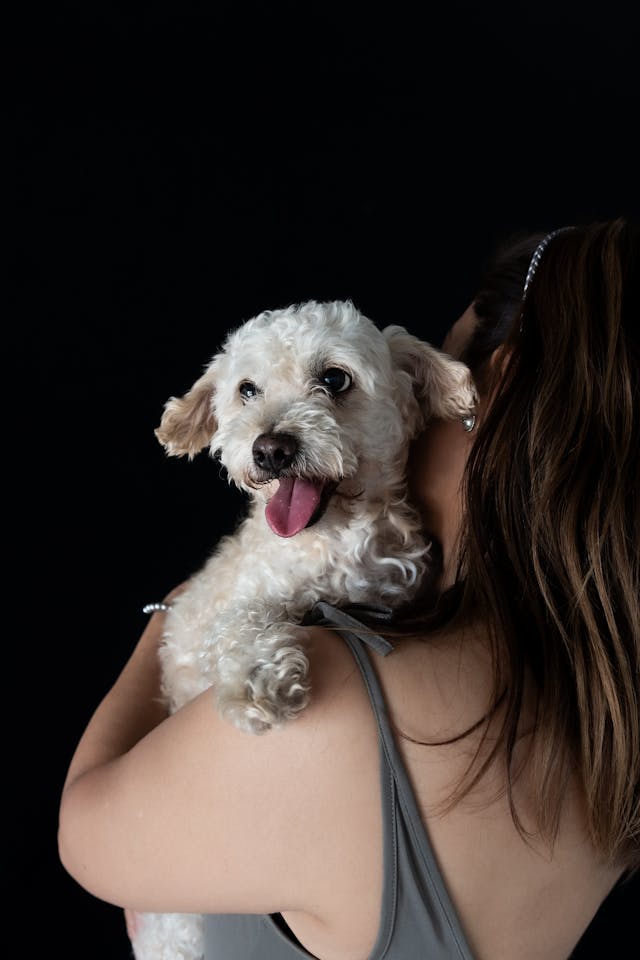Bringing home and Raising a rockstar labradoodle is one of life’s most heartwarming experiences. I still remember when I welcomed my first furry friend—those wobbly steps, curious eyes, and soft curls made the moment unforgettable. But right after the cuddles comes the real deal: the important and sometimes overwhelming task of training. As first-time Labradoodle owners, it’s easy to feel overwhelmed, but trust me, this journey is both rewarding and full of tail wags. These dogs are smart, affectionate, and genuinely eager to please, which makes the process feel less like work and more like bonding.
The key is a mix of consistency, patience, and positive reinforcement. A gentle word, a treat, or even a belly rub at the right time can do wonders. When I started with my pup, I learned quickly that they thrive on encouragement. With every sit, stay, and roll-over, I saw the potential to raise a true rockstar. So don’t stress—just stay steady, keep the vibe fun, and know that with each session, you’re shaping not just behavior, but a loving lifelong companion. You’re not just teaching commands—you’re building trust, one paw at a time.
Table of Contents

12 Training Tips
Potty Training 101
Potty training a Labradoodle is one of the most important steps in early housebreaking, especially for puppies under six months who don’t yet have full bladder control. When I began with my little furry friend, I quickly learned that consistency was everything. I set a routine—taking him outside first thing in the morning, after meals, naps, playtime, and every couple of hours. I picked one potty spot and used a simple cue like “Go potty.” Every time he got it right, I’d cheer and give a small treat. That positive reinforcement made him learn so quickly, it felt like magic. I stayed alert indoors, keeping an eagle eye for sniffing or circling, both signs he needed to go.
Of course, accidents happened. But I never punish—just calmly clean the area using an enzymatic cleaner to fully remove lingering odors. That keeps him from returning to the same spot. When I couldn’t directly supervise, crating was a lifesaver. It prevented messes and helped build a routine while protecting the home. This method of gentle guidance, combined with careful observation and a little patience, helped me avoid setbacks and truly raised a clean, confident rockstar.
Socialization for a Friendly, Well-Adjusted Pup
When I first got my Labradoodle, I knew that for him to grow up to be a friendly, well-adjusted dog, early socialization was key. The prime window between 7 and 16 weeks is crucial for introducing your pup to new experiences, people, and places. I made sure to introduce him to a wide variety of sights, sounds, and animals, starting with car rides, sidewalks, and even elevators. These experiences were always calm and controlled, ensuring he felt safe and confident.
To build his comfort around people, I invited vaccinated, healthy friend’s dogs over for play dates, allowing him to interact with other pets. For socializing with humans, I encouraged children, men, and people of diverse ages and appearances to offer gentle treats and pets. These positive encounters helped him feel comfortable and relaxed in different situations, reducing fear and building trust in the world around him. It was amazing to see how each new experience made him more confident and outgoing, truly helping him grow into a rockstar pup!
Reward-Based Obedience Training
Once your Labradoodle reaches 3 to 6 months, it’s time to start formal obedience training. I’ve found that reward-based methods are the most effective for teaching essential cues like sit, stay, come, down, leave it, and drop it. The key is to keep each training session short, upbeat, and full of praise. I like to use tiny training treats to encourage positive behavior, especially when practicing in different locations or around distractions. This helps build consistency and strengthens the behaviors.
To further boost their training, consider enrolling your Labradoodle in a puppy kindergarten class focused on positive reinforcement. My pup thrived in an environment where he learned alongside other puppies, guided by an expert trainer. This set a solid foundation for developing good manners and essential social skills. The best part? It’s all about teaching, not punishing, which makes the experience enjoyable for both you and your puppy.

Exercise and Mental Stimulation
To keep your Labradoodle happy and healthy, daily activity and mental challenges are essential. Aiming for at least two brisk 20-minute walks each day is a great way to keep them active. You can also play fun fetch games in the yard, and if you have a safe area, allow them to run around off-leash. For their brain, incorporate interactive puzzle toys that you can stuff with treats or kibble. This not only keeps them engaged but also helps in their development.
Chew toys are also crucial for your Labradoodle, as they satisfy their need to nibble and soothe teething discomfort. It’s important to rotate an assortment of chew toys to keep their interest high. Lastly, don’t forget about their need to socialize and explore new experiences—they love going along on outings, so make sure they get plenty of chances to interact with the world around them.
The Value of Crate Training
When you bring home a Labradoodle, crate training becomes a powerful tool to establish a secure, safe environment. It’s like setting up a den-like space for your pup, where they can relax and feel comfortable. Start by making the crate cozy with a bed, toys, and treats. This creates positive associations and makes the crate feel like a special space. For better results, feed your Labradoodle meals, give them chews, and offer treats inside the crate to build trust.
At first, begin with brief, supervised sessions. As your Labradoodle adjusts, gradually increase the time they spend in the crate. Begin with small intervals, around 30 minutes, and slowly work up to longer periods. Avoid leaving them confined for too long at the start to prevent accidents. After a crate session, always take your dog outside immediately. Over time, your Labradoodle will view the crate as their private bedroom, a safe and comfortable retreat for both rest and training.
The All-Important Chew Toy Rule
When raising a Labradoodle, one of the most important rules to follow is to provide appropriate chew toys while keeping those forbidden fruit items out of reach. It’s tempting to let your dog chew on shoes, remote controls, or kids’ toys, but it’s crucial to deny them access to these off-limit items. Instead, offer a variety of appealing chew toys to satisfy their natural chewing instincts. By doing this, you’ll help guide them towards what’s acceptable.
Whenever your Labradoodle starts mouthing something they shouldn’t, simply use a firm “No” or redirect them by giving them a chew toy to focus on instead. Avoid giving them shoes, socks, or similar items if you don’t want them to treat these things as fair game. With a little smart training, your dog will quickly learn what items are theirs to chew and which ones are off-limits.

Bite Inhibition: The Anti Nip-Nip
When you’re playing with your puppy, it’s easy to forget just how sharp those little puppy teeth can be. It’s important to start teaching them to be gentle with their jaws right from the start. If they nip you during play, make sure to say “Ouch!” in a high-pitched voice to let them know it hurts. Then, stop the play session and wait for them to calm down. Once they start licking instead of nipping, praise them and resume the game. It’s also helpful to teach them the strength of their bite during tug games by briefly releasing the toy when they bite too hard. This way, they will learn the boundaries of what is acceptable.
Prevent Jumping Up and Other Annoying Habits
Labradoodles are full of energy, and jumping is a common habit when they’re excited. To help your pup learn proper manners, simply turn away and ignore them when they leap up. Only give them attention when all four of their paws are on the ground. When guests arrive, ask them to also avoid making eye contact and only offer praise when the pup sits calmly. This consistency helps your Labradoodle understand how to behave.
You’ll also need to break other annoying habits like play biting, barking demands, and counter surfing. The key is to avoid rewarding these actions. Instead, focus on rewarding the behavior you want to see and remain more consistent than your pup. Over time, this will help your Labradoodle develop better habits, and good conduct will become second nature.
The Power of Positive Reinforcement
When raising a Labradoodle, the key to shaping their behavior is through positive reinforcement. This approach involves rewarding your pup with praise, affection, and play when they display good behavior. Instead of focusing on punishment for mistakes, make sure your pup understands what’s expected by motivating them to earn rewards for doing the right thing. Offering treats for proper behavior not only builds trust but also makes training more enjoyable for your dog.
Setting your Labradoodle up for success involves removing distractions and temptations that could lead to mischief. You might need to use tools like baby gates, leashes, or crates to maintain control during training. If your puppy misbehaves, calmly interrupt with a gentle “Eh-eh” or “No,” then redirect them to the correct action. This way, your Labradoodle learns the desired behavior in a fun, engaging environment where training becomes a rewarding game for both of you.

Grooming for Health and Hygiene
A Labradoodle may be low-shedding, but their coat still requires regular care. Brushing them thoroughly but gently once or twice a week will help prevent matting and keep their coat shiny and healthy. You should also give your Labradoodle a bath every few months, using a mild dog shampoo to avoid irritating their skin. Regular grooming not only keeps them clean but also strengthens the bond between you and your pet.
In addition to brushing and bathing, it’s important to trim their nails regularly to prevent them from getting too long. Using dog clippers, trim or round their nail tips before they cause discomfort. Pay attention to their floppy ears as well, cleaning them with a veterinarian-approved solution to avoid moisture buildup and potential infections. Handling their paws regularly will also make nail trims and grooming tasks easier over time. Maintaining a calm, patient approach to grooming will help your Labradoodle enjoy the process while staying hygienic and healthy.
The Perks of Puppy Preschool
One of the best ways to set your Labradoodle up for success is to enroll them in a force-free puppy preschool around the age of 12 weeks. These early classes provide a valuable opportunity for socialization and help your pup develop key skills for good behavior. In these classes, your puppy will learn important lessons like coming when called, walking politely on a leash, and greeting others without jumping or nipping. Early training with expert guidance is essential for shaping your Labradoodle into a well-behaved adult dog.
Graduating from puppy preschool is a huge milestone on the path to becoming a well-mannered adult. Look for a school that uses reward-based methods to motivate your puppy rather than punishment. The socialization and training they receive at puppy preschool set the foundation for future success in the neighborhood and beyond. Plus, attending regular classes in a safe and sanitized setting ensures that your Labradoodle stays engaged and learns the basics of good manners from an early age.

Healthy Habits: Diet, Exercise, Vet Care
A healthy, well-balanced diet is crucial for your Labradoodle‘s growth and well-being. Feed them a quality large-breed puppy food formulated for puppies under one year old. Always follow the feeding guidelines on the bag and avoid overfeeding treats or human table food. Regular meals will provide the nutrition needed for strong muscles, bones, and a shiny coat, helping your Labradoodle grow into a healthy adult dog.
In addition to a healthy diet, your Labradoodle needs plenty of exercise to stay fit and happy. Make sure they get daily walks, playtime, and the chance to burn off energy. Keep up with regular vet visits to ensure your dog stays in top health. Schedule their first vet appointment soon after bringing them home for an exam, deworming, and vaccinations.
Ongoing visits will keep your Labradoodle protected against common health issues. Be sure to follow up with necessary shots, heartworm prevention, and flea control on schedule. As your dog approaches six months of age, it’s time for spaying or neutering. With a mix of proper care, training, and regular exercise, your Labradoodle will thrive and become your loyal companion for life.
How to mentally stimulate a Labradoodle?
To mentally stimulate a Labradoodle, you can engage them in activities that challenge their problem-solving abilities. Some great options include interactive puzzles, treat-dispensing toys, and obedience training. Scent work (hiding treats for them to find) and tug-of-war can also keep their minds sharp. In addition, regular socialization with other dogs, new environments, and exposure to different situations help them stay mentally alert. Make sure to balance mental stimulation with physical exercise to keep your Labradoodle well-rounded and satisfied.
Did the guy who invented Labradoodles apologize?
Yes, Wally Conron, the man credited with creating the Labradoodle, has publicly expressed regret for the breed’s creation. He initially developed the Labradoodle in the late 1980s as a guide dog for people with visual impairments, aiming to combine the best traits of the Labrador Retriever and Poodle. However, later in life, Conron expressed concerns about the issues that have come with the breed’s popularity, particularly with some breeders prioritizing appearance over temperament, leading to health issues. He even apologized for contributing to the breed’s overpopulation, although he acknowledges the good that Labradoodles have brought to families and individuals in need of service dogs.
How do you discipline a Labradoodle?
Disciplining a Labradoodle effectively involves using positive reinforcement rather than punishment. Reward your dog with praise, affection, and treats when they exhibit good behavior. If they misbehave, calmly correct them by redirecting their attention and using firm but gentle commands like “No” or “Eh-eh.” Avoid harsh punishment, as Labradoodles are sensitive dogs and may not respond well to fear-based discipline. Consistency is key in training, and with patience, your Labradoodle will learn what behaviors are acceptable and which ones are not.
Yellow Labradoodle Pics , Info, Facts Revealed 2025
11 Things to Love About the Boxer Labradoodle Mix
5 Best Brush for Labradoodle Reviews&Tips
The Benefits of Labradoodles in Therapy and Service Roles 2025
